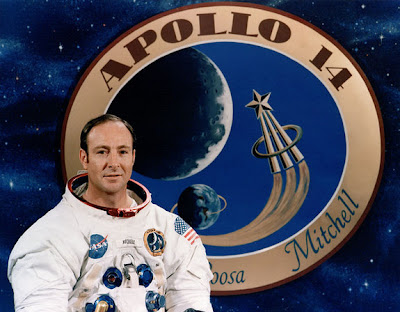
Apollo astronaut Edgar Mitchell has decided to give up the camera he kept as a memento of his 1971 moon mission rather than face a federal lawsuit over its ownership.
In a settlement he reached with the U.S. government filed with the District Court in southern Florida on Thursday (Oct. 27), the sixth man to walk on the moon agreed to "relinquish all claims of ownership, legal title, or dominion" over the data acquisition camera that flew with him aboard NASA's Apollo 14 mission.
Mitchell agreed to allow Bonhams, the New York auction house where he had consigned the camera for sale last June, to release the artifact to the government. Bonhams had estimated the camera's value at $60,000 to $80,000.
The 16-mm camera, which was one of two motion picture cameras on board the Apollo 14 lunar module "Antares" when it landed on the moon on Feb. 5, 1971, will be given within 60 days to the Smithsonian National Air and Space Museum in Washington, DC for display.
According to the the terms of the settlement, which still needs to be signed off by a judge, Mitchell and the federal prosecutors will be responsible for their own legal fees. Earlier this month, MItchell lost his bid for the case to be dismissed after a judge ruled that Florida's statute of limitations did not apply and any determination if the government had abandoned or gifted the camera would need to be made in court.
Read More
In a settlement he reached with the U.S. government filed with the District Court in southern Florida on Thursday (Oct. 27), the sixth man to walk on the moon agreed to "relinquish all claims of ownership, legal title, or dominion" over the data acquisition camera that flew with him aboard NASA's Apollo 14 mission.
Mitchell agreed to allow Bonhams, the New York auction house where he had consigned the camera for sale last June, to release the artifact to the government. Bonhams had estimated the camera's value at $60,000 to $80,000.
The 16-mm camera, which was one of two motion picture cameras on board the Apollo 14 lunar module "Antares" when it landed on the moon on Feb. 5, 1971, will be given within 60 days to the Smithsonian National Air and Space Museum in Washington, DC for display.
According to the the terms of the settlement, which still needs to be signed off by a judge, Mitchell and the federal prosecutors will be responsible for their own legal fees. Earlier this month, MItchell lost his bid for the case to be dismissed after a judge ruled that Florida's statute of limitations did not apply and any determination if the government had abandoned or gifted the camera would need to be made in court.
Read More
No comments:
Post a Comment